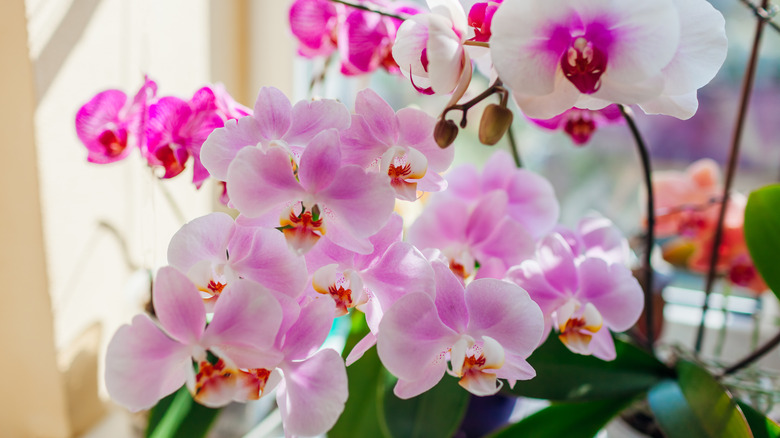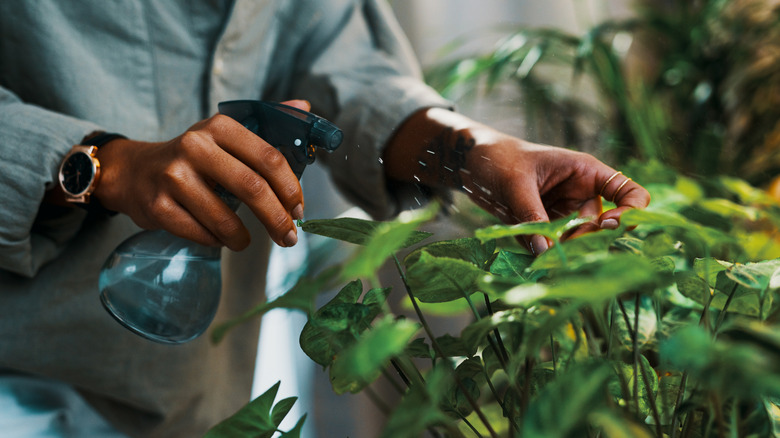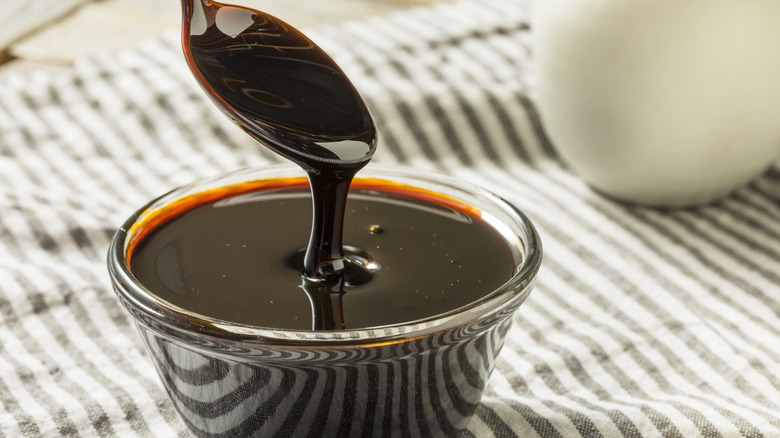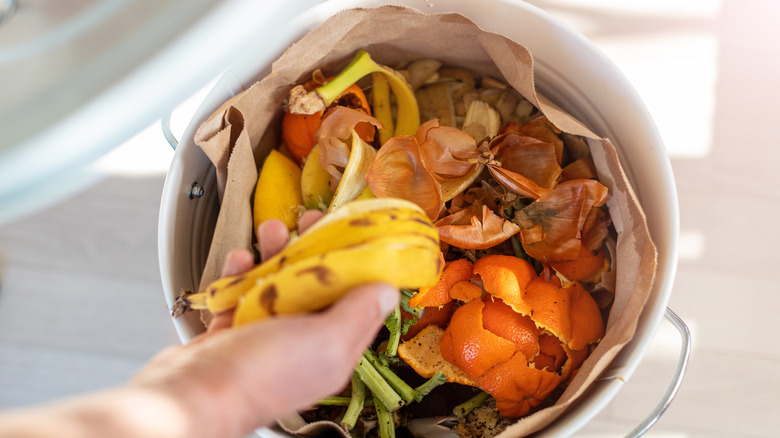Do DIY Orchid Fertilizers Work To Encourage Beautiful Blooms?
Vibrant blooms atop graceful stems are a hopeful sight when you first bring home a new orchid. You may assume that anything so beautiful must be hard to maintain, and this feels true when after just a few months, your orchid loses its blooms, the leaves become dull and leathery, and the roots dry out, no matter how much you water them. Something is obviously amiss, but what? Despite your best intentions, you could be making any number of common mistakes that are killing your orchid.
Social media is buzzing with fertilizer recipes to boost orchids' growth and encourage them to bloom longer. Home gardeners often share before and after shots of their once-struggling but now-thriving orchids online. Despite a lack of official research to back up many of these claims, these creators' orchids have plump leaves, new roots, and fresh buds.
Some of the best minerals you can use to fertilize your orchids are nitrogen, phosphorus, and potassium. Commercial fertilizers provide an even mix of these nutrients and are great for most plants, and yet the thought of stirring up something homemade with these same nutrients — especially from food scraps — has a certain appeal. These methods are cheap and resourceful, and feeding your plants with ingredients you also eat feels particularly wholesome. Not much research supports these at-home recipes, though, so which ones are worth a shot? We're here to fill you in.
Do milk, lemon juice, and water help orchids bloom?
A shot of milk, a splash of lemon, and a few liters of water is the formula for a trio of cure-all applications for orchids. Does this mixture of 1 gallon of water, 1 tablespoon of milk, and 1 teaspoon of lemon juice cut it as a liquid fertilizer, a spray, and a leaf cleaner? Despite social media images of orchids glowing healthily after reportedly receiving these three treatments, the science just doesn't support this combo.
Separate the milk and the lemon juice, however, and you've got a proven remedy. The Orchid Research Center (ORC) recommends both liquids for cleaning orchid leaves. Its experts confirm that milk, particularly skim, is effective at removing mineral deposits. Even so, the ORC does caution that you should only use milk on the tops of the leaves, as it could clog the leaves' pores otherwise.
The ORC also gives lemon juice a thumbs-up as a means of cleaning both sides of an orchid's leaves. Keeping your orchid's leaves free of dust and buildup helps the plant breathe and absorb moisture better. Watering your plants with milk (when you use the right proportions) also has some known benefits, but there's seemingly no data on whether or not it's good for orchids, in particular.
Is molasses a miracle orchid cure?
Tasty, sticky molasses is a great source of nutrients. It's packed with vitamins and minerals recommended for humans, and its high content of iron, potassium, and calcium — nutrients that are common ingredients in most commercial fertilizing mixes — hint that it could be great for plants, as well. Amateur orchid enthusiasts recommend stirring ½ teaspoon of molasses into 1 cup of warm water, mixing it, and spraying it on your orchid's roots and leaves after a thorough watering.
Adding blackstrap molasses to your plants does have certain benefits. Researchers at China's Huazhong Agricultural University found in 2020 that low concentrations of molasses diluted in water enhanced crop production, though they also discovered that high concentrations actually inhibited growth. That said, the university conducted its research on rapeseed crops rather than orchids. While molasses could be a feasible orchid fertilizer, you may want to approach this recipe with caution.
Should you try vegetable peels?
Slurries made from dried potato peel powder and cucumber peels steeped in water both sound like the ingredients from the latest fat-busting detox drink. This time, however, influencers are touting these peels as panaceas for orchids. Those who have dried these peels or steeped them in water claim the resulting liquid is a great orchid supplement. Even so, there's no proof that these elixirs have any benefits for your plants.
Researchers have vetted some peels for improving plant vigor. Both banana peels and eggshells have been gaining traction as non-toxic DIY fertilizers, and science does back this up. Banana peels are a fruit leftover that you can use on a variety of plants both indoors and out. They're especially helpful for providing plants with an essential dose of potassium. In particular, DIY fertilizers made from eggshell powder and tea showed promise in a 2018 study published in Agricultural Sciences. Though potatoes and peas were the study's targets, you may find this to be an easy addition to your orchid's health regimen.



